I got the opportunity to travel to earthquake affected areas in Gorkha during the last week of June alongside a team from Gorkha Foundation. They had gone there to start building a high school in Nepane, Kearbari VDC of the district. My intention was to gather first hand information of the damages caused by the two major earthquakes on April 25 and May 12, and to find out how communities had been coping with the destructions caused by the disaster. I was particularly keen on learning how schools were managing in temporary learning shelters, and what kind of help they needed both in the short and long terms.
We traveled up the western part of Gorkha, along its border with Lamjung district, and visited twelve schools and met with headteachers from additional three schools in Chopprak, Kerabari, Simjung, Muchhok, Jaubari, Hansapur, Kharibot VDCs. Every single one of the schools had extensive damages, with most of the buildings completely destroyed by the strong tremors. Standing in front of the obliterated school buildings, it struck me how fortunate we were that the earthquake occurred on a Saturday when all the schools were closed. While schools were able to salvage few desks and benches, other equipments including computers were not spared when the walls caved in. Out of the 23 schools in the district where OLE Nepal had established digital libraries, the library servers and machines were safe in about half of the schools.
Amidst the ruins and destruction, there were a number of positive and encouraging findings. Every school that we visited had already built temporary learning shelters with whatever means and resources they could find, and classes were underway even in the sub-optimal conditions. While some of the schools have used locally available bamboo and wood to build the structures and have used hay for roofing, others have used corrugated galvanized iron (CGI) sheets that they had received from various sources. Few schools have also used large heavy-duty tents provided to them by donors. Many schools have also reused the CGI sheets from demolished buildings to construct the temporary shelters. Most schools reported attendance at above 75%.
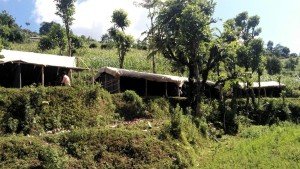
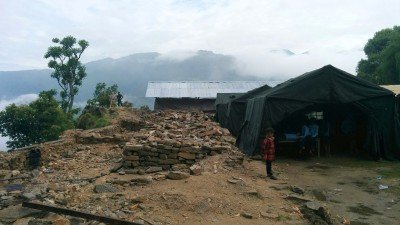
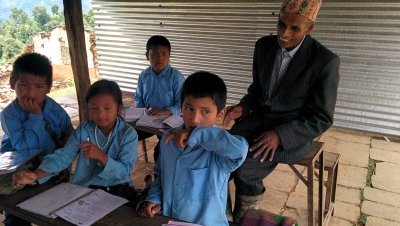
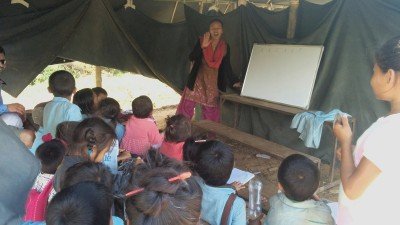
The schools did not wait for donors or government to come build the shelters for them. Each school received Rs. 25,000 per classroom from the District Education Office (DEO) to help clear the debris and build the shelter, and a notice that they must start classes by a mid-June. Local communities, parents, and teachers got together to help build the shelters, while in some schools local youth volunteers came to help. This was an example of the resilience of the local communities, and clearly demonstrated the high priority they placed on their children’s education, especially in light of the fact that many families did not have a proper place to live in.
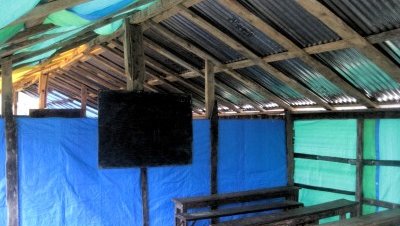
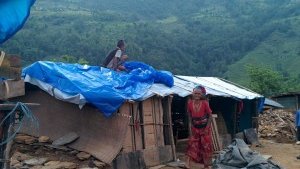
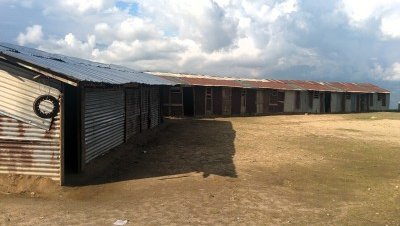
Another interesting observation was that one building design that withstood the earthquake test was one that the government had been promoting for about a decade. The two-room truss structure designed with assistance from Japan International Cooperation Agency (JICA) was found standing in all the schools we visited even when the adjacent structures were completely obliterated. The walls that were built using stones and mud had come down, but the truss system and roof were left intact. In one school where the wall was built using stone and cement around the truss structure, the building got a green sticker from the inspector, allowing the school to run classes in the building, whereas all the other buildings in the school got red stickers. Future building design for schools should definitely take this fact into consideration, with modifications on the walls to make them safer and stronger.
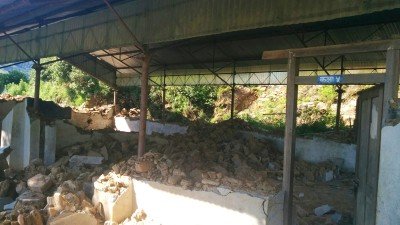
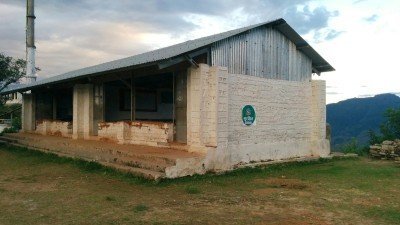
The school headteachers and community leaders showed interest in moving on from temporary shelters to build permanent structures. At the end of my visit, I met with the Chief at the DEO, Mr. Hari Aryal, in Gorkha Bazaar, and discussed the DEO’s plans for reconstructing schools. He said that the DEO is expecting approved designs from the Ministry of Education by July end, after which schools can start the building process.